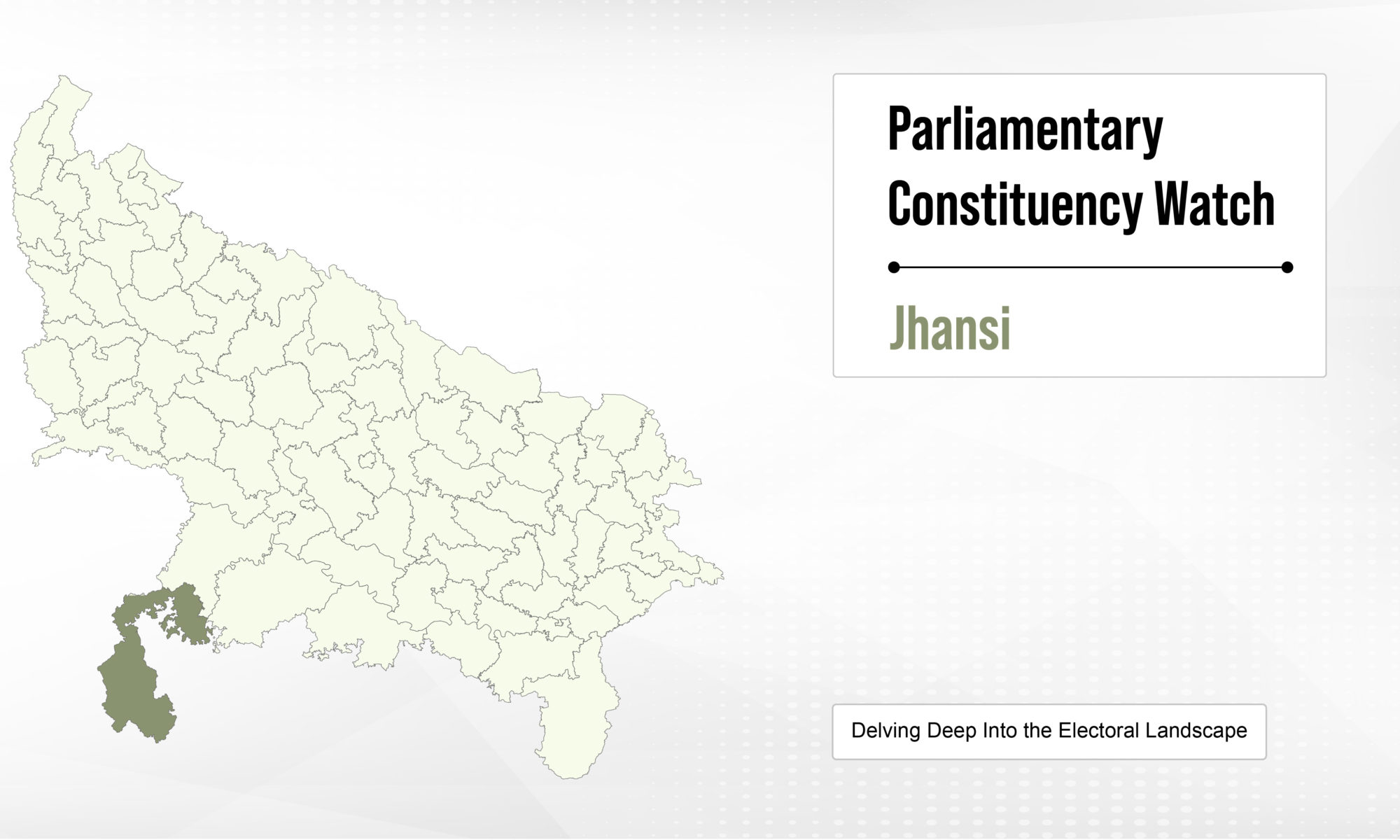Location
Jhansi Lok Sabha constituency is one of the 80 Lok Sabha constituencies in the Indian state of Uttar Pradesh. It comprises 5 assembly constituencies and 2 districts.
Category
Designated as a General Constituency.
Voter Turnout
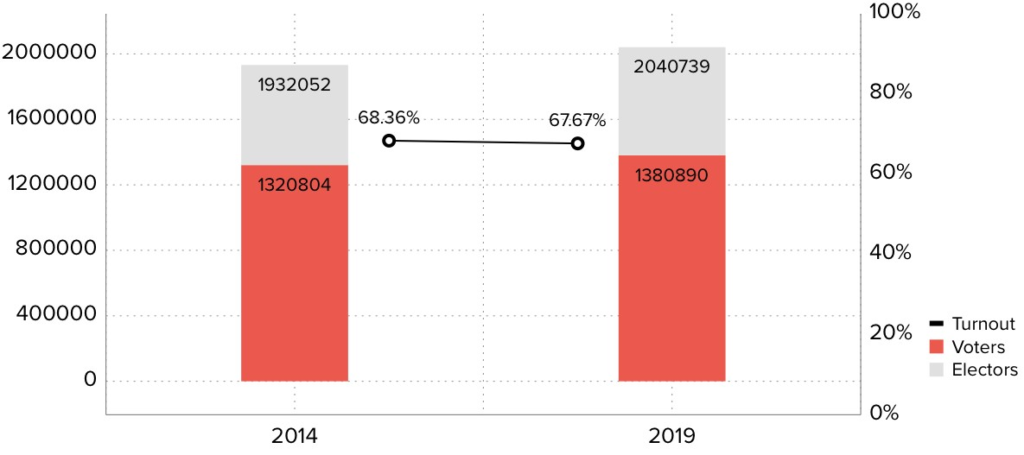
Jhansi Electoral Turnout Rates
During the 2014 elections, the total number of electors was 19,32,052 and the turnout stood 68.36%, in real numbers- 13,20,804 voters. 2019 witnessed a turnout decrease; out of the 20,40,739 electors, 67.67% of voters exercised their constitutional rights. In real numbers- 13,80,890 voters.
Representation and Results
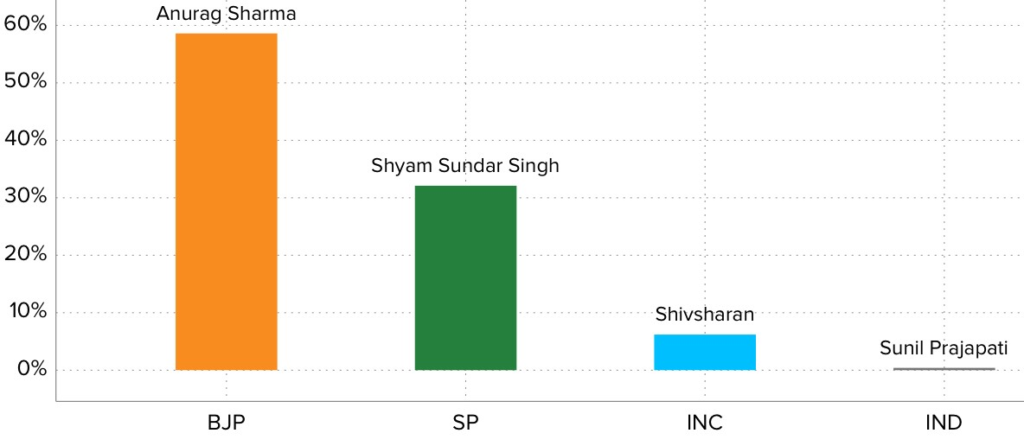
Party Wise Vote Share
2019’s parliamentary election winner, BJP’s Anurag Sharma gained a vote share of 58.60% and defeated SP’s Shyam Sundar Singh whose vote share stood at 32.10%. The other prominent candidates in the fray were INC’s Shivsharan with a vote share of 6.20% and independent candidate Sunil Prajapati with 0.40% of vote share.
Voting History –2014 & 2019
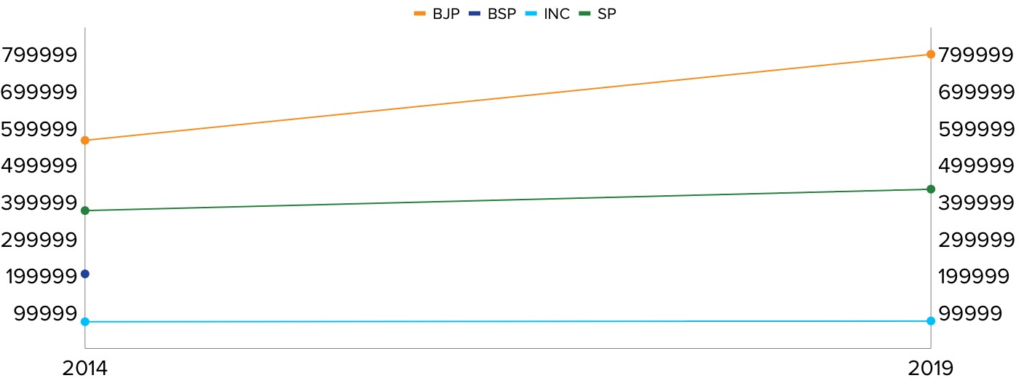
Party Wise Shift in Votes
In 2014, BJP won the constituency and earned 5,75,889 votes followed by 8,09,272 votes in the 2019 election victory. On the other hand, SP garnered 3,85,422 votes in 2014 and 4,43,589 votes in the 2019 elections.
Parties at helm through the years
The Jhansi constituency has been represented by a number of different parties over the years.
The Indian National Congress (INC) dominated the political scene in the early years, from 1952 to 1971. However, the political landscape began to diversify with the emergence of the Janata Party (JP) in 1977. The 1980s witnessed a return of the INC’s prominence, with brief interruptions from the Bharatiya Janata Party (BJP) in 1989.

Timeline of Winning Parties
The 1990s marked the rise of the BJP as a major political force, with multiple victories in 1991, 1996, 1998, and 1999. The INC reclaimed power in 2004, followed by the Samajwadi Party (SP) in 2009. The BJP made a significant comeback in 2014 and maintained its position in the 2019 elections, solidifying its status as a key player in Indian politics.
Party-wise success rate
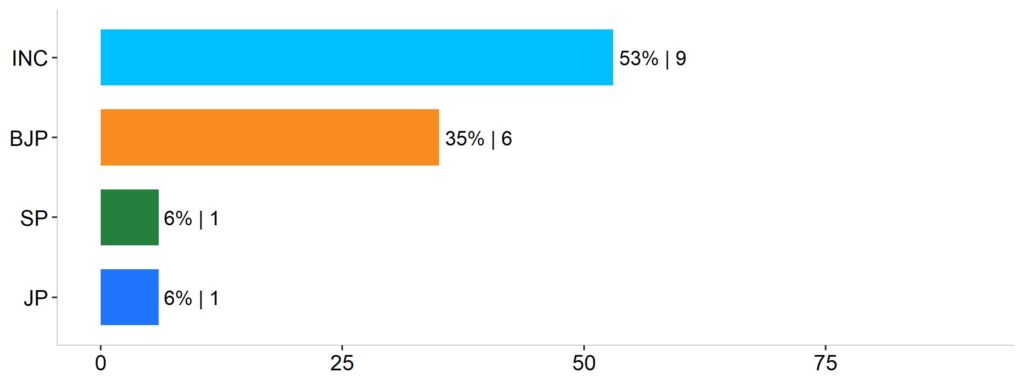
Success Rate
In terms of the success rate in securing the Jhansi Lok Sabha seat, INC and BJP had exhibited the highest rate of success over the years, standing at 53% and 35% respectively. Among other prominent parties, SP achieved a success rate of 6%.
Gender Wise Distribution of Contestants
During the 2009 elections, there were 18 contestants and 17 of them were male and 1 female, in percentage- 94% and & 6%. In 2014, the total number of contestants decreased to 15, out of which 11 were male and 4 were female, in percentage- 73% and 27%.

Gender Wise Distribution of Candidates
In 2019, on the other hand, the total number of contestants was 11 whereby 9 were males and 2 females, in percentage that is 82% and 18% respectively.
Gender wise voter turnout
In 2009, out of a total of 15,61,698 electors, 8,61,859 voters cast their ballots. Of the 8,35,111 male electors, 5,09,705 participated in the election, constituting a turnout rate of 61%. There were 7,26,857 female electors and of that, 3,52,154 chose to vote with a turnout rate of 48%.
In 2014, there are 19,32,015 people who are eligible to vote and 13,20,804 of them chose to exercise their right to vote. Out of these, 10,34,085 were male electors and 8,97,930 were female electors. 71% of male electors (7,34,103) and 65% of female electors (5,86,701) cast their ballots.
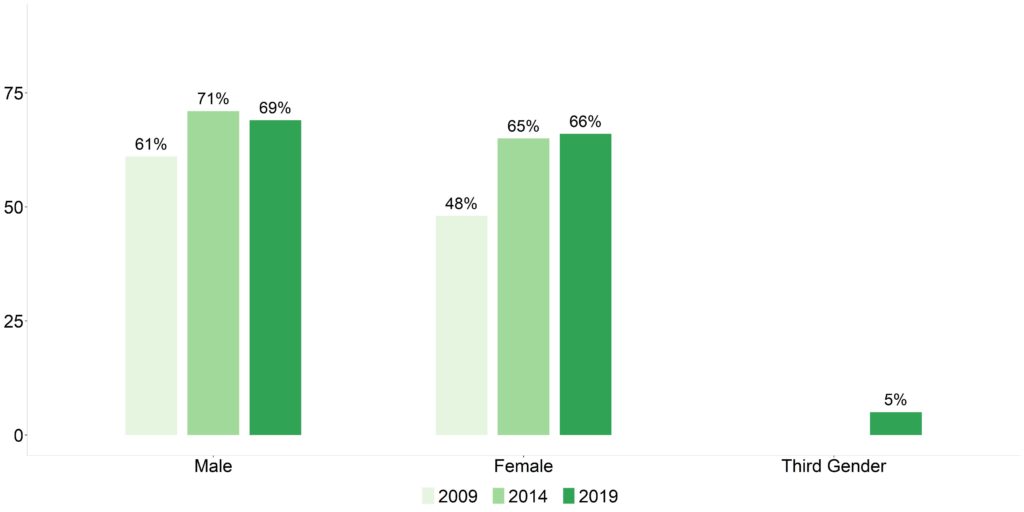
Gender Wise Voter Turnout
In 2017, transgender people were included as a separate category of the third gender in electoral rolls. There were 65 electors belonging to the third gender category in the parliamentary constituency during the 2019 elections. And 3 of them exercised their newly granted constitutional right to vote and thus their turnout stood at 5%.
The total count of electors in 2019 was 20,40,739 out of which 13,79,407 chose to cast their ballot in the parliamentary elections. Out of 10,80,079 male electors, only 69% voted which is 7,45,494 male voters in real numbers. On the other hand, the voter turnout for females stood at 66% which translates to 6,33,910 voters out of a total of 9,60,595 female electors in real number.
Gender-Wise Literacy Rate
We are taking a peek at the gender-wise literacy rate of the Jhansi and Lalitpur districts which are part of the Jhansi parliamentary constituency as literacy is considered an essential indicator of the socioeconomic development of the region.
Jhansi District
The 2011 census of India has pegged the overall literacy rate of the Jhansi district at 65%. Gender-wise, the male literacy rate in the district is 74% whereas, for females, the literacy rate stands at 55%.

Gender Wise Literacy Rate
Lalitpur District
The overall literacy rate of the district is 52%. However, when it comes to gender, the literacy rate for males in the district stands at 62% while the female literacy rate is 42%.
Stay updated on the electoral statistics for parliamentary constituencies and the changing dynamics on Meradesh App. Available on Appstore and Play Store.
Reach your constituents, gain insights into their motivations, and build campaigns based on data-driven strategies with the Meradesh Platform.
Data Source – Meradesh.org
